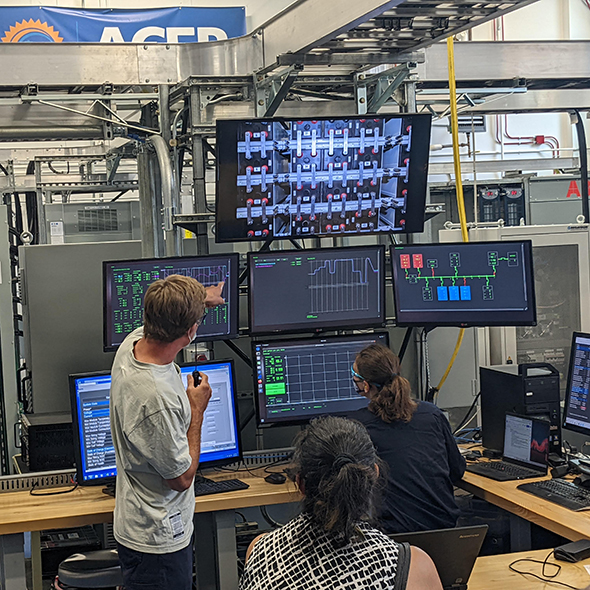Did you know that diesel generators act as a primary source of electricity generation in most of Alaska’s more than 200 remote microgrids? Alaska’s power demand, outside of the Railbelt, is served entirely by remote energy grids, or microgrids.
A microgrid is an electricity distribution system that balances loads and energy resources and can be operated connected to larger, main power networks (macrogrids) or in a controlled, coordinated way as a remote islanded grid.
In many rural communities, fuel has to be transported via barge during the summer months, or costly air freight, making these communities very vulnerable to both supply chain disruptions and the high cost of oil. The state’s low population, geographic dispersion, lack of extensive road system and decentralized energy governance create natural economic and social drivers toward renewable energy integration, innovation and improved energy security.
As microgrid systems gain traction in major population centers across the globe as a means of improving energy security and resilience, eyes are turning to Alaska communities as leading examples for designing the sustainable grid architecture of the future.
 .
.
The Energy Technology Facility offers the unique capability to replicate remote village
power plants in rural Alaska. This gives the Power Systems Integration team the ability
to take a community’s energy load data, plug it into our lab SCADA system and simulate
the integration of renewable energy sources like wind or solar with and without a
battery energy storage system. This can save a community time and great expense and
can help them make informed decisions on energy systems that could be suitable for
their energy generation needs.
Partnering with communities, private industry, government, and other research institutions,
the PSI laboratory also provides a controlled environment for a broad range of energy
component testing, including power control technologies, in a controlled environment
capable of closely mimicking a real-world scenario without the potential for damaging
expensive equipment.

ACEP’s free online course, ‘Foundations of Microgrids,’ demystifies the concepts of
community-scale renewable energy electric generation and integration through incredible
animations, step- by-step instruction, and virtual field trips to some of the most
innovative microgrids.
This course covers fundamental concepts of microgrid design from a community-centric
perspective and emphasizes a holistic approach to energy systems management. The course
is online, taken at your own pace, and will cover topics including:
- Types of microgrids and the energy and infrastructure services they provide
- Non-grid- connected/off-grid or islanded microgrid projects and systems
- Strategies for low-, medium-, and high- contribution renewable energy systems integration
- Dispatchable and non-dispatchable power sources
- System control, regulation, and optimization
- Power electronics advances with inverters and energy storage devices
- Different system designs as well as control and optimization strategies for converter-dominated power systems
- The role of energy storage and inverter technologies and other power electronics, in enabling very high penetration levels of renewable resources such as wind, and photovoltaics
- Scoping, data collection, modeling, and designing a microgrid system



